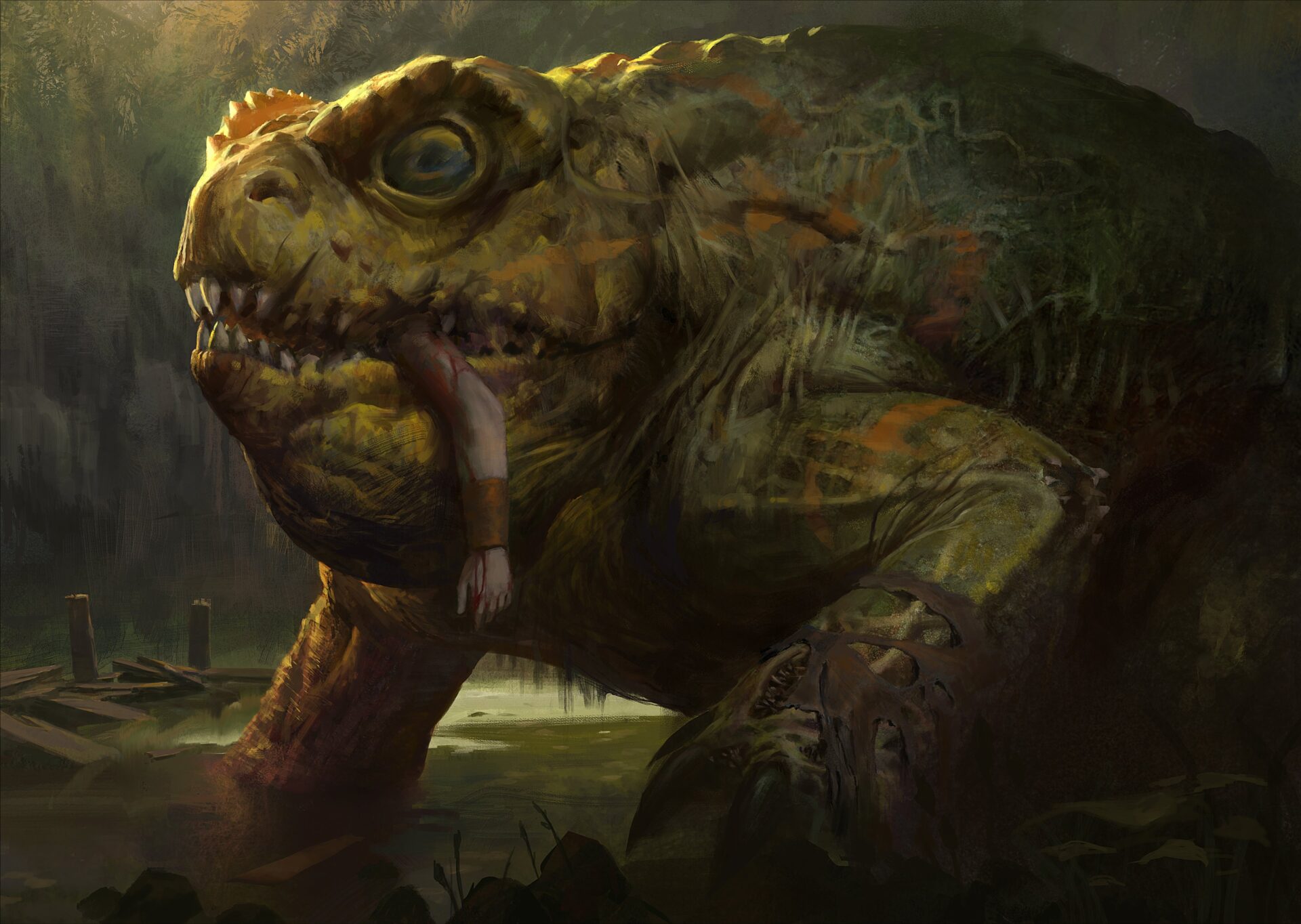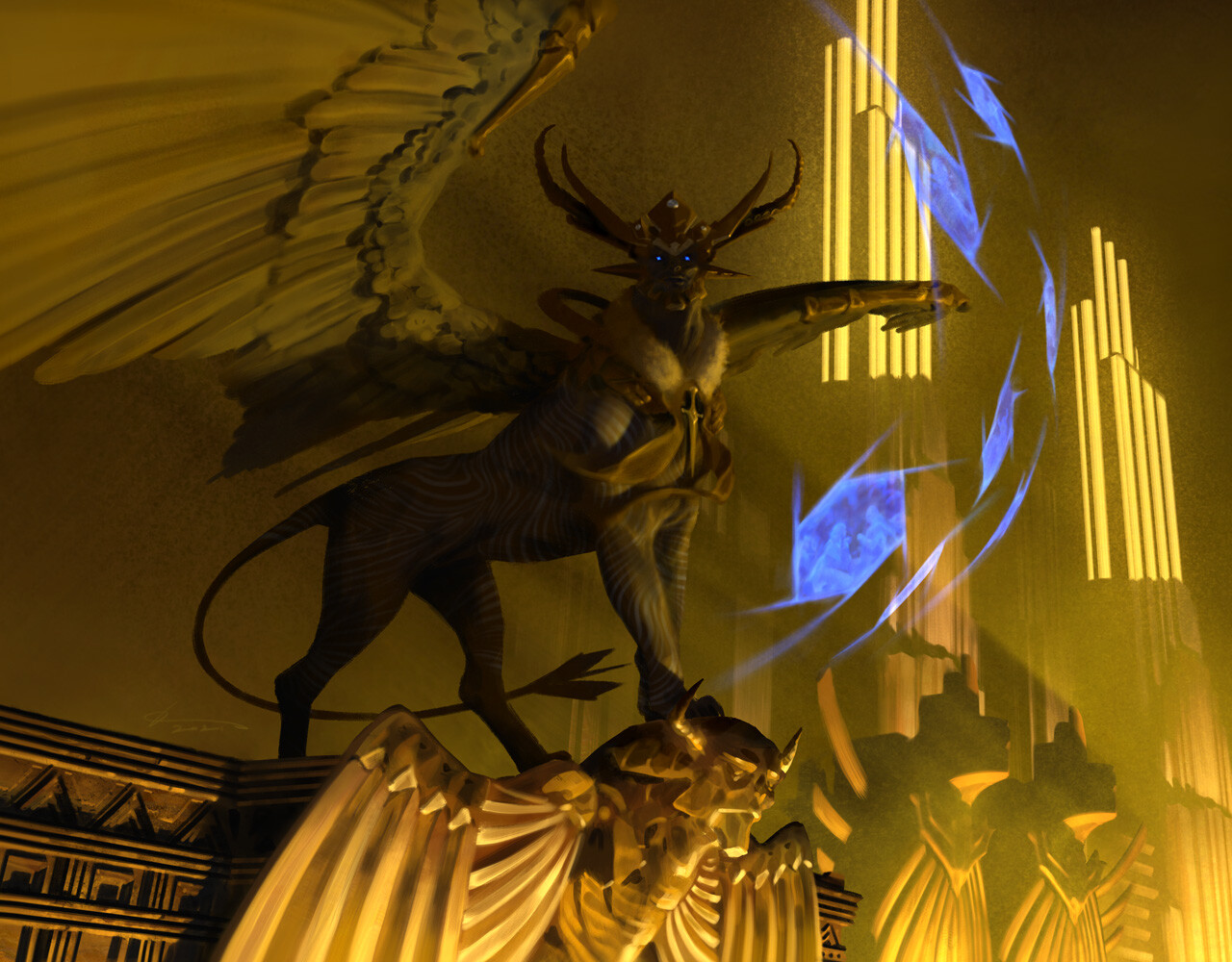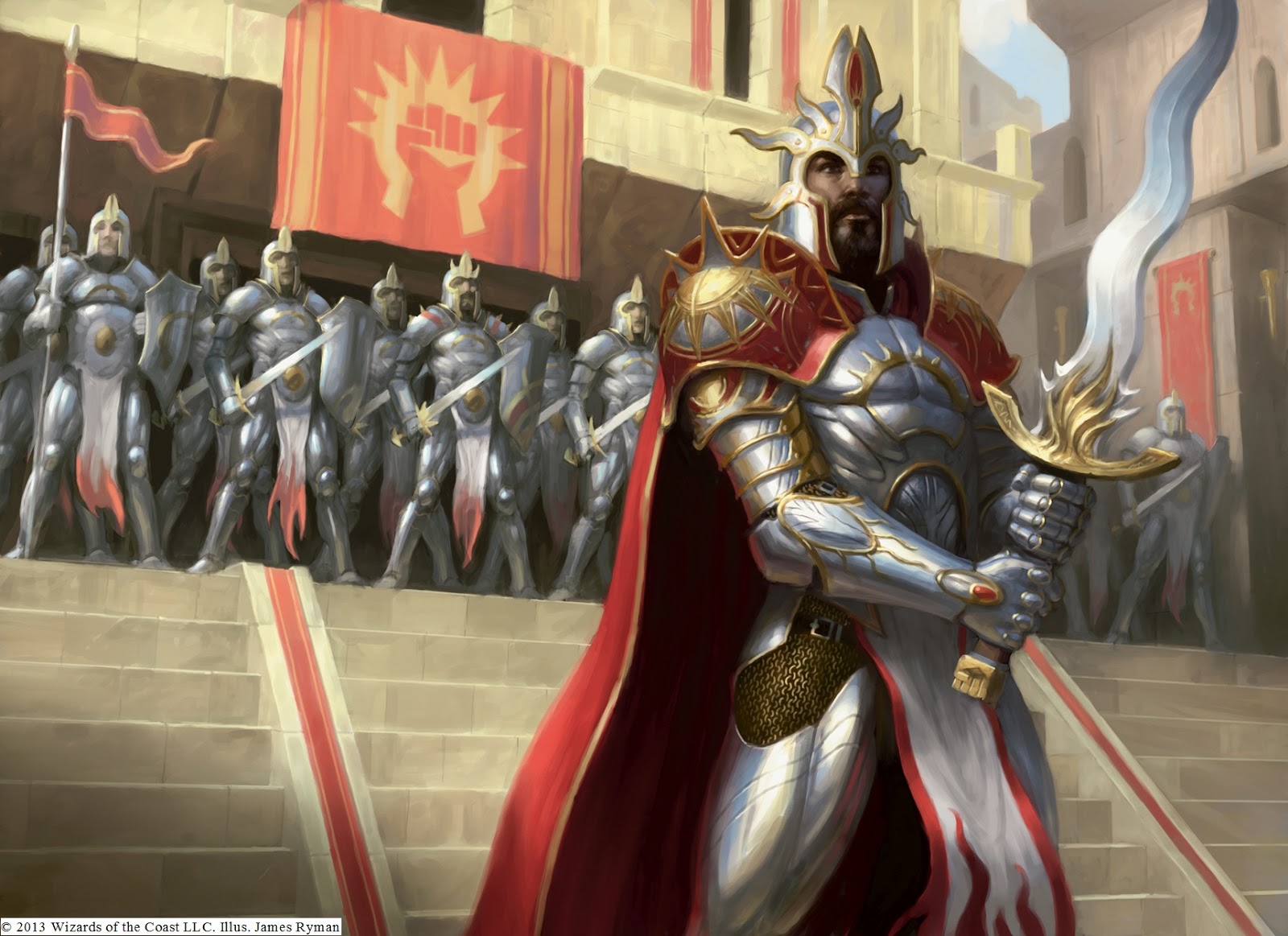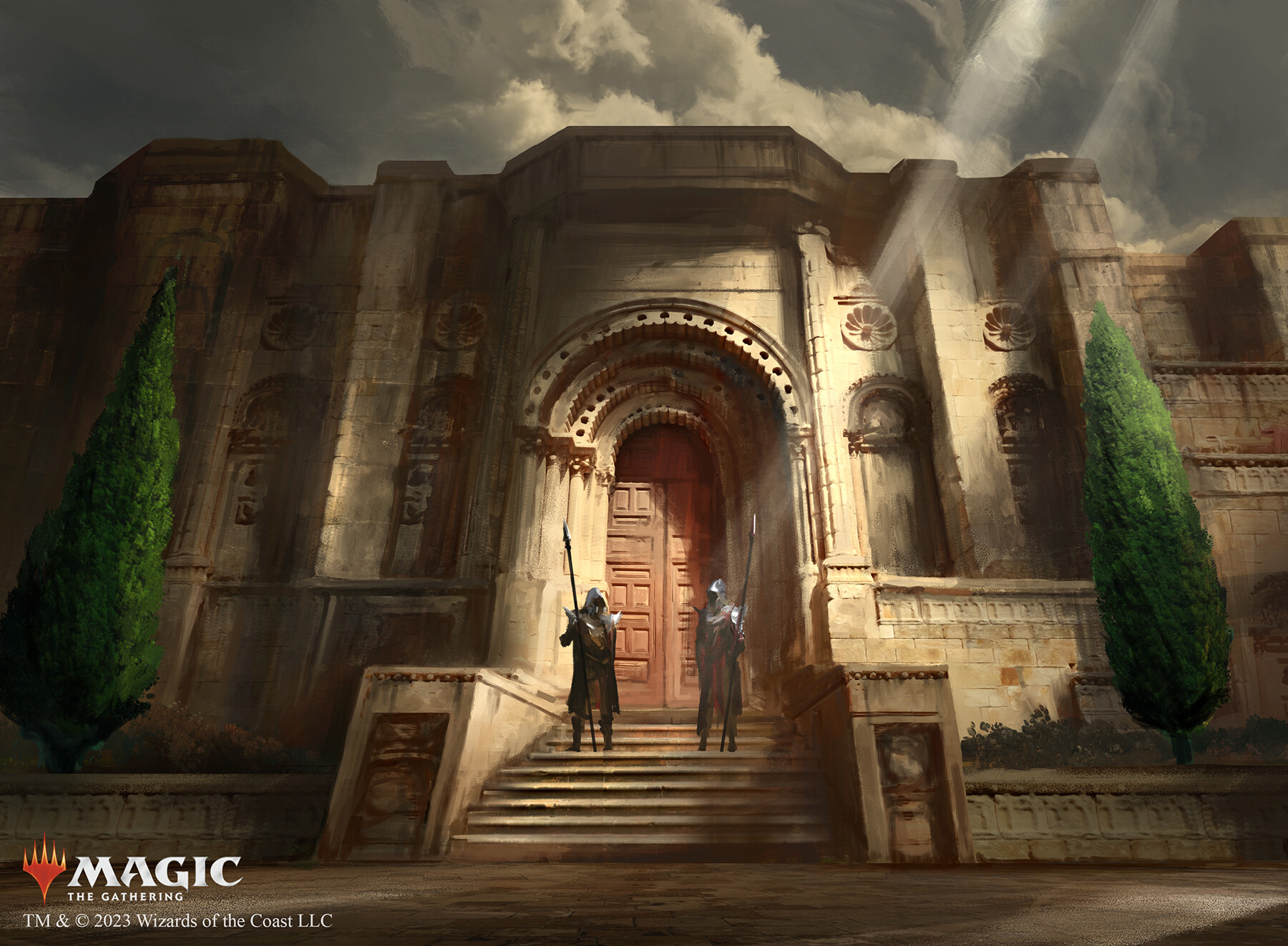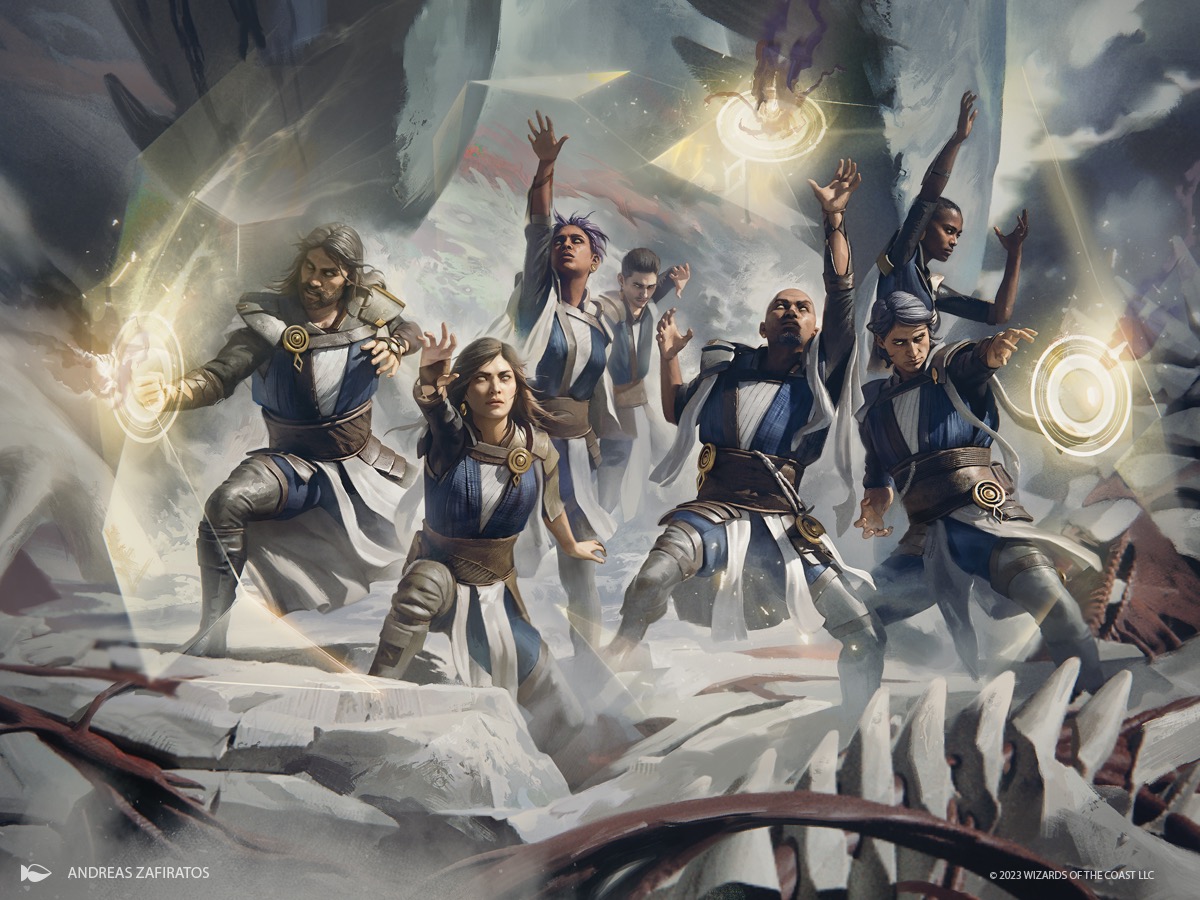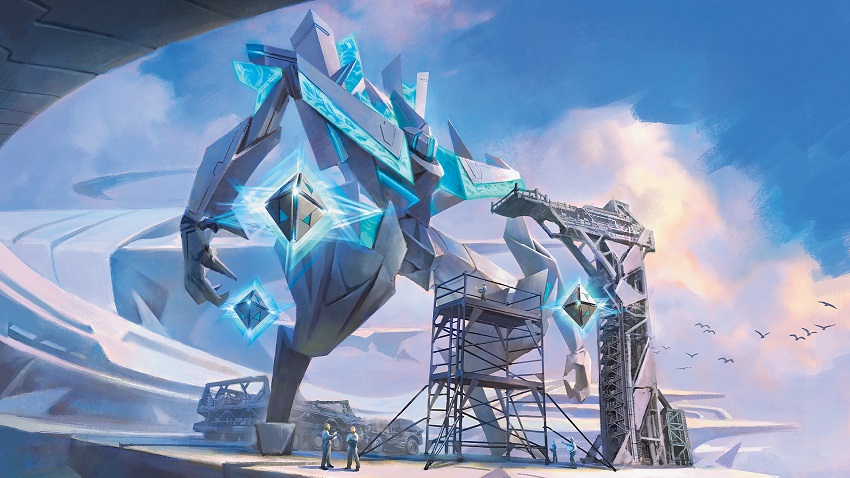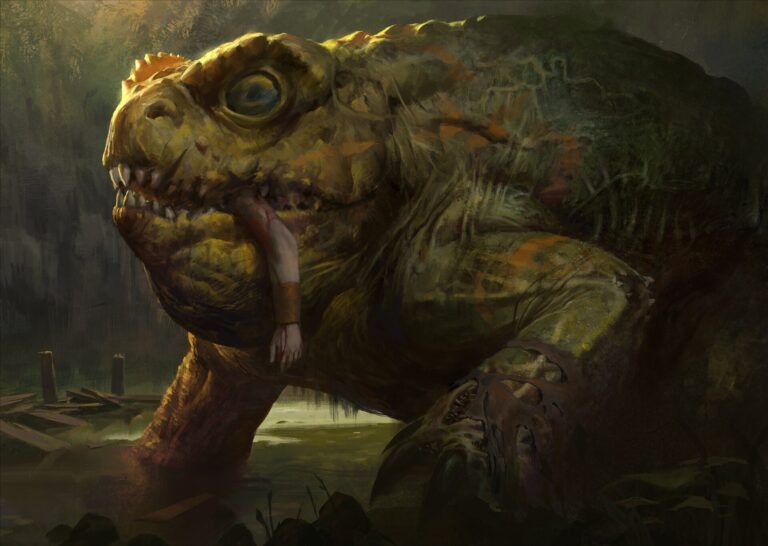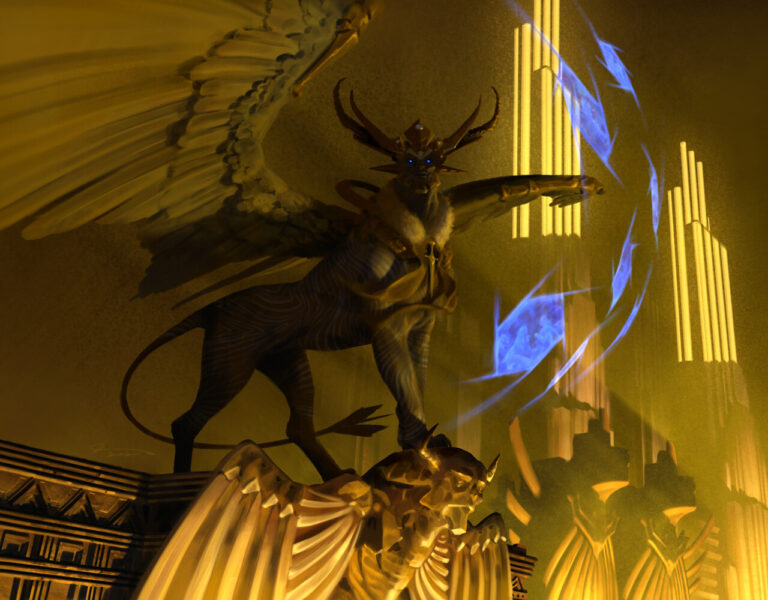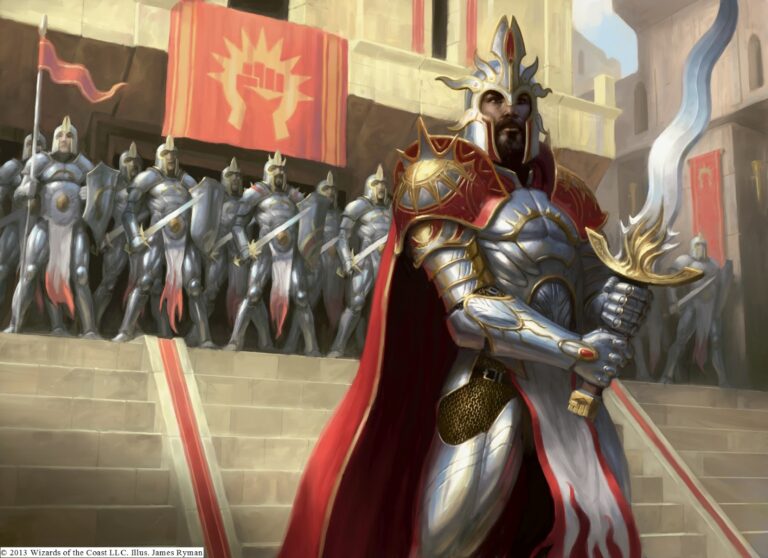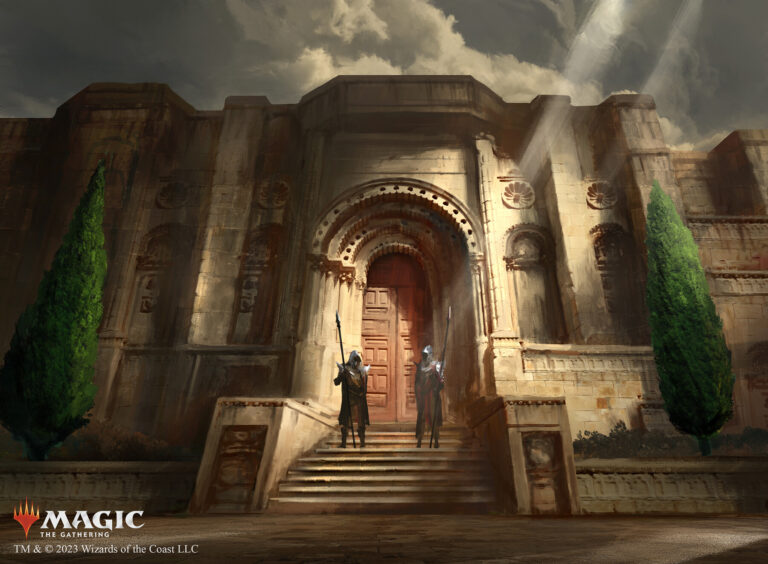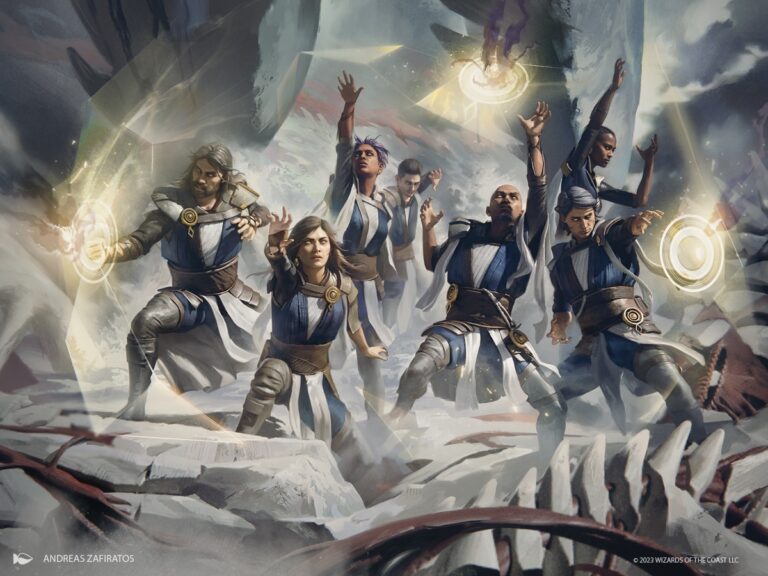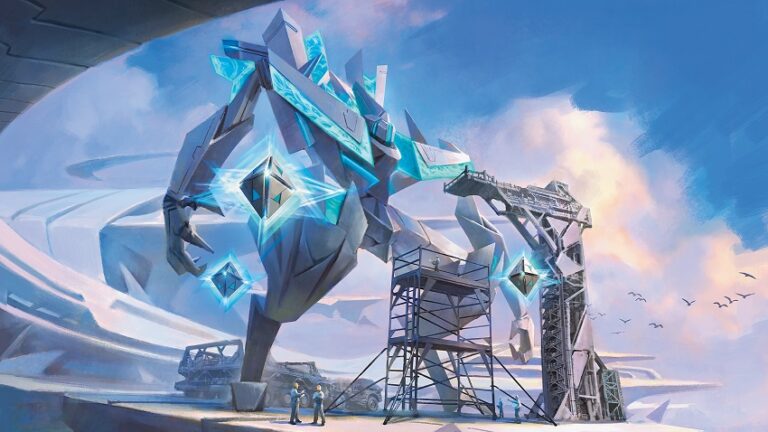Welcome to this primer dedicated to Aminatou, the Fateshifter, a commander that can be an excellent choice for those who enjoy playing reanimator in the Centurion Commander format. In this guide, we will explore the decklist, key interactions, and winning strategies of a deck filled with synergies.
In this article, I will avoid repeating the points already discussed in this decktech dedicated to the control version of Aminatou.
What does Aminatou do?
Aminatou is a planeswalker who doesn’t always have a major impact on the game but opens the door to various synergies that we can exploit:
- +1: We draw a card from the top of our library and then put a card from our hand on top of our library. This ability, combined with shuffle effects (like fetchlands) or “Miracle” cards like Metamorphosis Fanatic, can greatly help us during the game.
- -1: Allows us to “blink” a permanent, temporarily removing it from the battlefield and then returning it. This interaction is the heart of the deck, as it allows us to reuse the ETB (Enter the Battlefield) abilities of powerful creatures..
- -6: Exchanges all of our non-land permanents with those of our opponent.
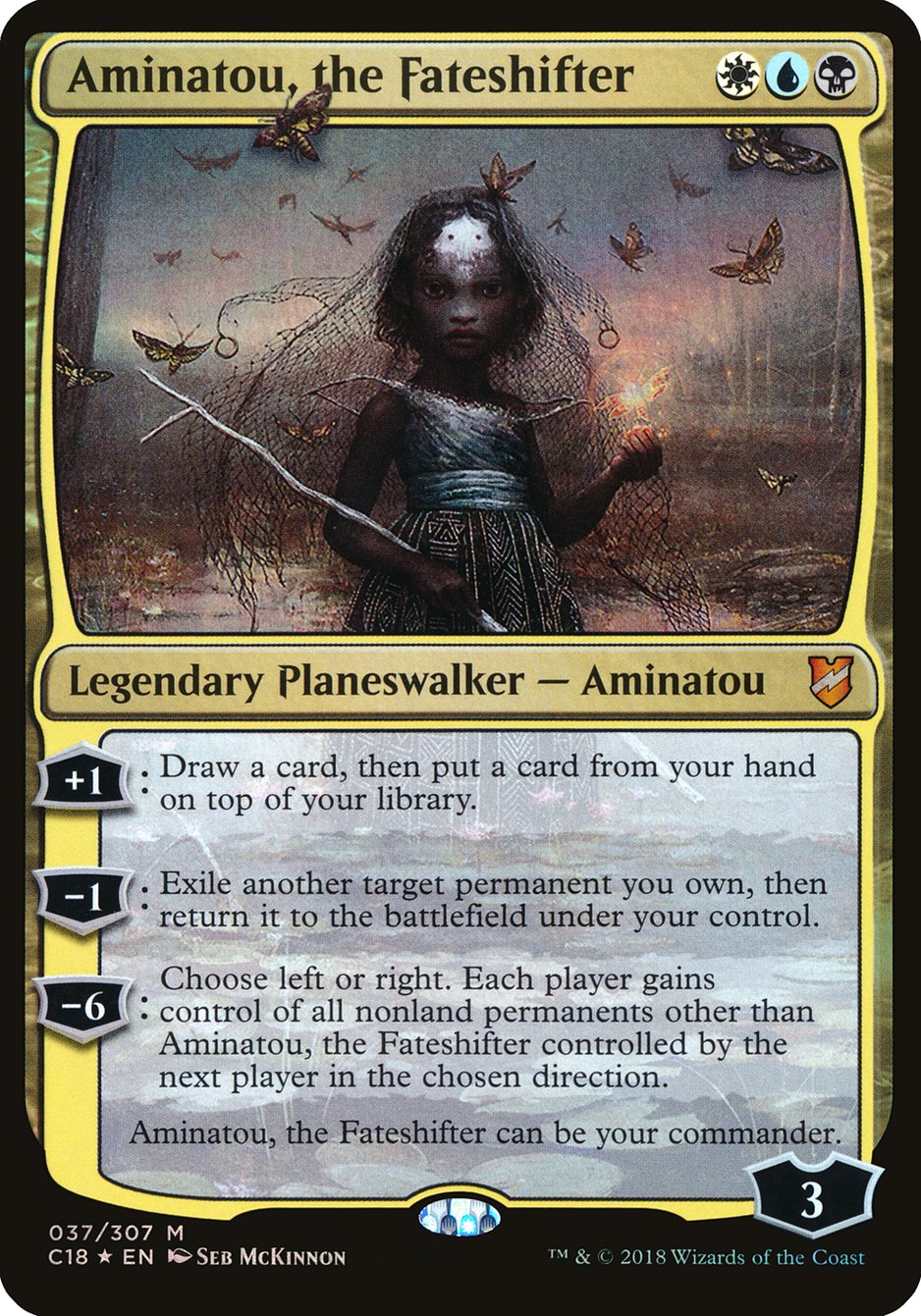
The list I’m reviewing today was built starting from Matteo Agostini’s, who a few years ago was among the very first to believe in this version of Aminatou.
Deck Structure
An effective Reanimator deck is based on three fundamental pillars:
- a creature to reanimate
- a way to send that creature to the graveyard
- a spell to bring the creature back from the graveyard to the battlefield
There are also cards that allow us to skip one or more of these steps, such as Show and Tell.
Let’s see how these three pillars are present in the deck.
Creatures to Reanimate
Agent of Treachery / Angel of Despair / Archon of Cruelty /Ashen Rider / Hoarding Broodlord / Lord of Change: these creatures have some of the strongest ETB (Enter the Battlefield) effects we can exploit.
Griselbrand: probably one of the few creatures without an ETB effect that we want to keep in the deck to reanimate in the early turns and take advantage of the card draw it generates.
Angel of the Ruins / Harvester of Misery / Solitude / Grief / Troll of Khazad-dûm: these cards allow us to “skip a step” and go to the graveyard without having to use other cards (except for the cards to exile for the elementals).
Magister of Worth / Kederekt Leviathan: in addition to the various single removals in the deck, we have access to these creatures that are part of our board wipes.
Abdel Adrian, Gorion’s Ward: as we will see later, this creature is part of a combo that seems perfect for this commander.
Metamorphosis Fanatic: a new addition to the deck that synergizes with our plan.
Sending Creatures to the Graveyard
To quickly achieve our goal of reanimating powerful creatures, we use various methods to send them to the graveyard. One of the main ways is through discard outlets, using spells that require us to discard a card as an additional cost or spells that allow us to filter our hand by drawing and then discarding. Another method for filling the graveyard is using cards that let us mill directly from the top of our library.
Here’s the list of these cards that are an important part of our deck: Fallaji Archaeologist, Psychic Frog, Bone Shards, Careful Study, Collective Brutality, Incarnation Technique, Three Steps Ahead, Bitter Triumph, Faithful Mending, Occult Epiphany, Tainted Indulgence, Sauron’s Ransom, Currency Converter, Ripples of Undeath, The Modern Age, Oath of Jace, Cephalid Coliseum, Tomb Fortress, Takenuma, Abandoned Mire.
The only card I chose to include for tutoring a creature directly into the graveyard is Unmarked Grave, but if you like this approach, you could also add Buried Alive.
Less conventional methods for discarding cards from our hand include casting Thoughtseize targeting ourselves and not playing anything to discard cards at the end of our turn.
Reanimation spell
Reanimation spells constitute the last of the pillars of this deck. Without them, it would be difficult to find the time to play our creatures from hand. Here are the ones present in this list: Priest of Fell Rites, Metamorphosis Fanatic, Reanimate, Persist, Incarnation Technique, Unburial Rites, Shallow Grave, Animate Dead, Dance of the Dead, Necromancy, Tomb Fortress.
Some may think these are few spells for reanimation, but remember that we have many ways to filter our hand, and during our games, we will dig deep into the deck to find them.
Gameplan
Aminatou, the Fateshifter in this reanimator version is a deck capable of putting enormous pressure on the battlefield due to the ability to quickly play one of our powerful creatures. The main strength of the commander is the ability to blink the animated creatures and leverage their ETB effects or spells like Animate Dead to “swap” the creatures on the battlefield by reanimating a different one from the graveyard.
Playing Aminatou in the early turns of the game is a path we can take for several reasons:
- To absorb some damage against aggro;
- To filter our hand if we have a way to shuffle the library;
- If we think we can use her ultimate ability in that game;
- If we know Aminatou will survive until the turn we can reanimate a creature that can be blinked;
- If we know Aminatou will survive until the next turn when we need an extra mana that we would get by blinking a land;
- If we have a permanent we can blink (for example, The Modern Age);
- If we want to waste resources from our opponent (for example, Counterspell);
- If we don’t have anything better to do.
Playing Aminatou for her +1 exposes us to several cards that are now staples of the format, such as Orcish Bowmasters and Hullbreacher. So we must carefully consider if we can take this risk. Also, we always need to keep in mind that playing our commander in the early stages of the game and increasing the commander tax can prevent us from utilizing Aminatou and her blink abilities in the later stages.
This deck requires a certain level of strategic planning: try to keep some backup cards in hand to avoid running out of resources against opponents with countermeasures like graveyard hate. To play around these types of dangers, the deck includes Incarnation Technique and Tomb Fortress, which make life more complicated for counterspell players and avoid being stopped by graveyard removal.
Don’t be afraid to aggressively mulligan; finding the right mix of discards and reanimations is crucial. In the Centurion 1v1 format, having answers to aggressive strategies is critical: our plan against aggro is to animate a creature quickly to stop their race. However, we still have the ability to handle the most significant threats thanks to cards like Solitude, Grief, Swords to Plowshares, and Collective Brutality. To keep the opponent’s hand in check, we also have access to Duress, Thoughtseize, and Inquisition of Kozilek.
Combos and Synergies
Abdel Adrian, Gorion’s Ward + Dance of the Dead / Animate Dead / Necromancy
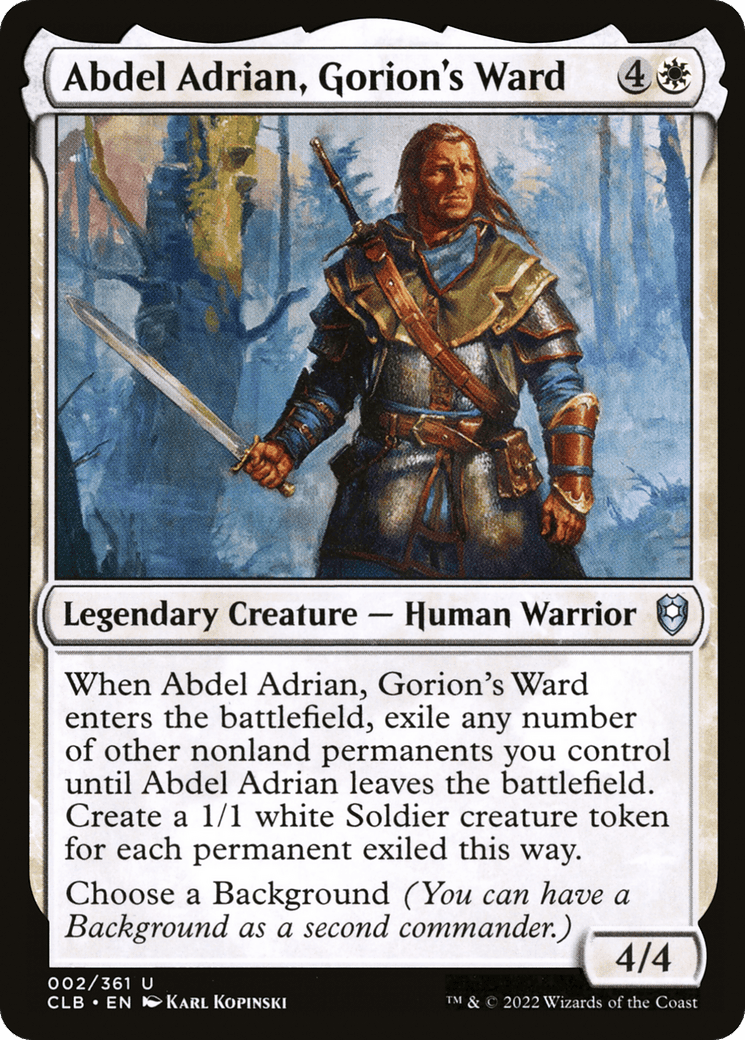
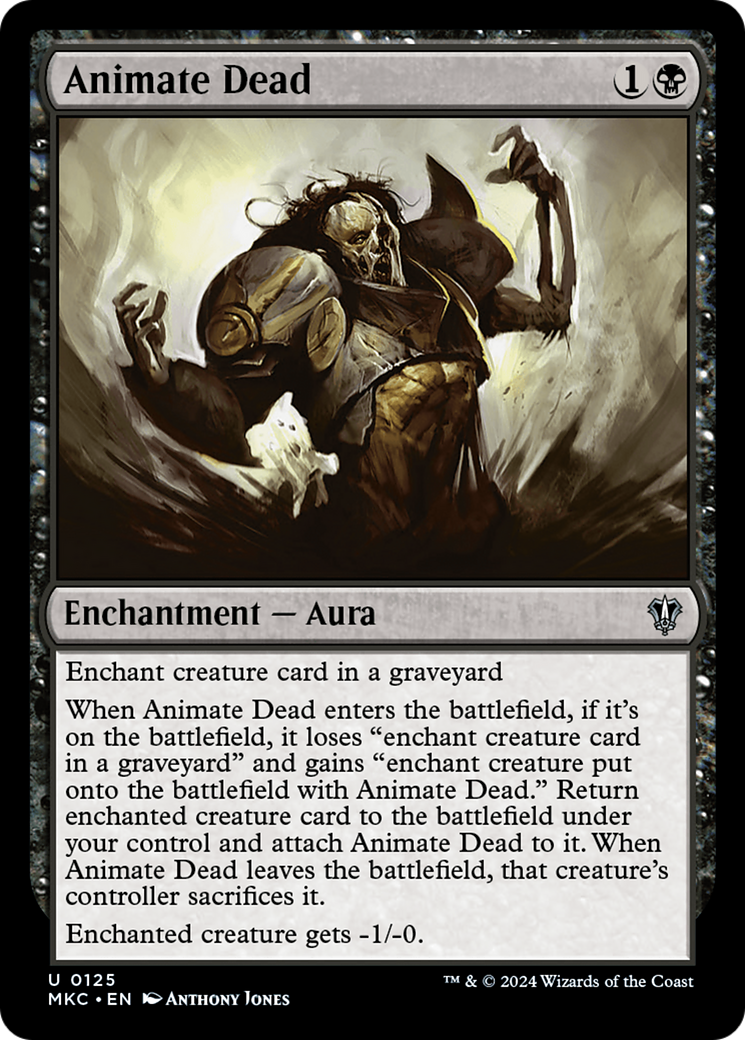
The combination of these cards allows for an infinite combo that generates infinite 1/1 Soldier tokens and blinks our non-land permanents. How does the combo work?
When Abdel Adrian, Gorion’s Ward enters the battlefield, you can exile any number of non-land permanents you control. For each exiled permanent, you create a 1/1 white Soldier token.
If Abdel Adrian is brought back into play with a reanimation spell like Animate Dead, the spell attaches to him. When Abdel Adrian enters, it exiles Animate Dead (along with any other permanents), creating a 1/1 Soldier token.
By exiling Animate Dead, Abdel Adrian is sacrificed and goes to the graveyard, bringing the enchantment back onto the battlefield.
You can then target Abdel Adrian again with Animate Dead, repeating the cycle infinitely. The combo stops when you choose not to target Abdel Adrian with the reanimation spell anymore.
This sequence allows for the creation of infinite 1/1 Soldiers and can trigger ETB effects for potentially infinite damage (like Archon of Cruelty or Orcish Bowmasters) or other devastating effects.
Kederekt Leviathan + Dance of the Dead / Animate Dead / Necromancy
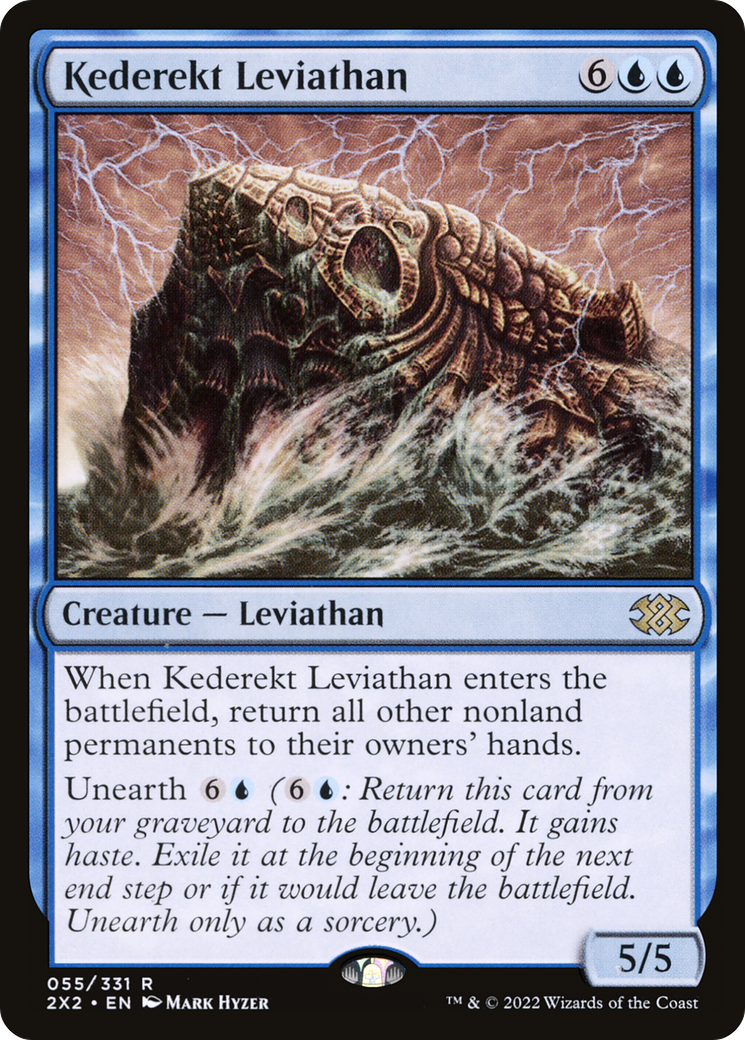

We can exploit Kederekt Leviathan’s ability in combination with Animate Dead (and other reanimation spells) because when Kederekt Leviathan enters the battlefield, it will not only bounce all non-land permanents but also return the enchantment to your hand, leading to the sacrifice of the creature. This allows you to repeat the cycle each time Animate Dead enters the battlefield attached to Kederekt Leviathan, keeping the battlefield constantly free of non-land permanents.
Ashen Rider + Dance of the Dead / Animate Dead / Necromancy
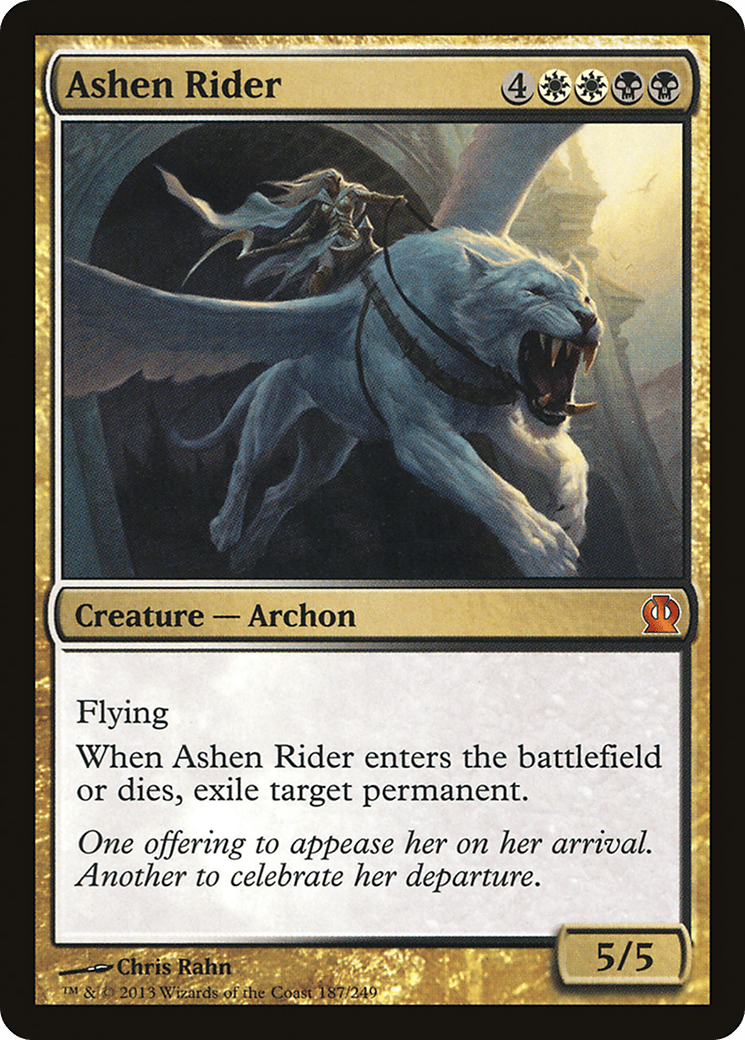
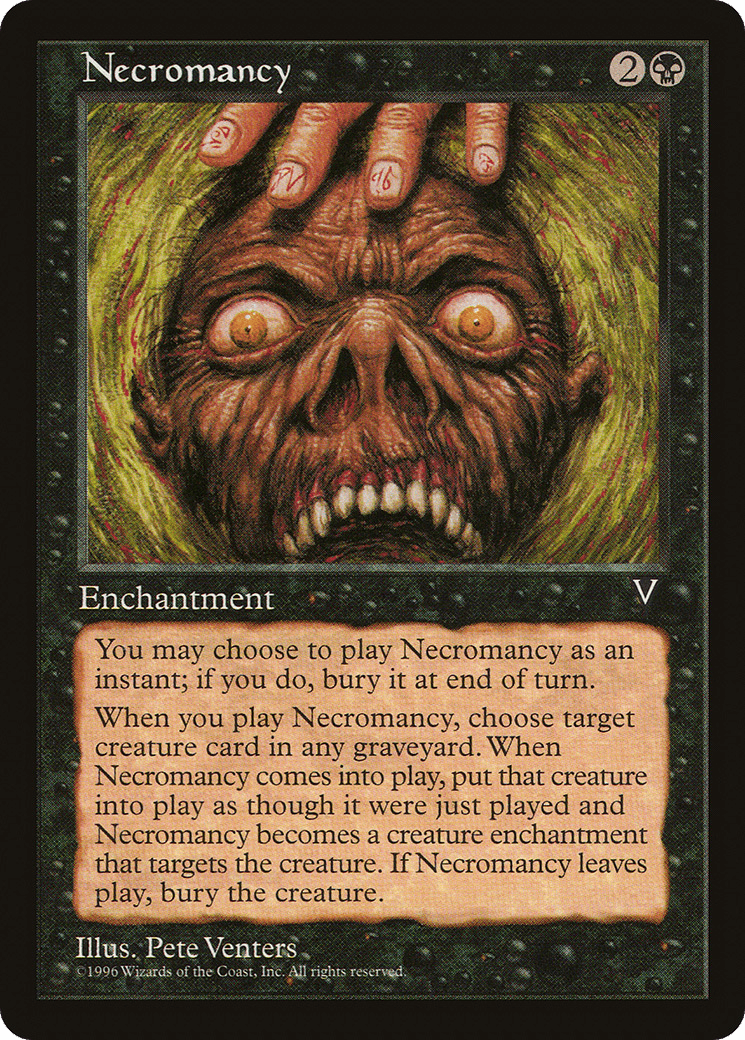
You can use Aminatou, the Fateshifter to blink enchantments like Animate Dead to change the reanimated creature and exploit the most suitable ETB for that particular situation.
As we have understood, when they leave the battlefield, reanimation spells force us to sacrifice the enchanted creature. By taking advantage of this, we can exile multiple permanents in sequence thanks to Ashen Rider. When this creature enters the battlefield or dies, you can exile a permanent. With Aminatou’s -1, we can blink the enchantment, sacrifice Ashen Rider sending its trigger on the stack, enchant it again, and exploit its ETB.
With Unmarked Grave, we can put not only creatures to be reanimated into the graveyard but also Priest of Fell Rites and Unburial Rites. Other interesting targets for this card could be Cling to Dust, Faithful Mending, and Kederekt Leviathan.
With Shallow Grave (or Corpse Dance, which is not present in this list), we can reanimate a creature at the end of the opponent’s turn so that the next end step in which it needs to be exiled will be ours. This allows us to utilize Aminatou’s effect, blink the creature, making it a new object, and keeping it on the battlefield permanently.
Not featured in my deck
The Meathook Massacre / Leonin Relic-Warder / Animate Dead.
Cast Animate Dead to bring Leonin Relic-Warder from the graveyard to the battlefield, attaching Animate Dead to it. When the Relic-Warder enters the battlefield, it exiles Animate Dead, forcing you to sacrifice Leonin Relic-Warder. When Leonin Relic-Warder leaves the battlefield, Animate Dead returns to play, reattaching to it in the graveyard, and the cycle begins again. This process generates infinite death that we can combine with cards like The Meathook Massacre.
Creatures with the Disturb ability can be discarded/milled to be played from the graveyard and blinked.
If the target is the opponent’s commander and it is put in the command zone, when Skyclave Apparition leaves the battlefield, our opponent will not create the token. The two abilities of Skyclave Apparition are connected. When the second ability refers to “the exiled card,” it specifically means a card that was exiled by the first ability. If that card leaves exile, it will no longer count as “the exiled card” for the purposes of the second ability.
Astral Dragon + Parallax Wave.
When Astral Dragon enters the battlefield, it creates token copies of Parallax Wave. We start by activating the ability of the first token of Parallax Wave. We remove a fade counter from this token to exile Astral Dragon. At this point, the Dragon has been exiled, but the tokens of Parallax Wave remain. Now we can activate the same ability of the first Parallax Wave up to four times, targeting any creature on the battlefield. This allows us to exile our creatures, if we desire. We can exile our opponents’ creatures by responding to the removal of the fade counters and then activating the ability of the second token of Parallax Wave by exiling the first token of Parallax Wave. In this way, the first token leaves the battlefield, bringing back all our exiled creatures (including Astral Dragon) into play, and then resolving the triggers on the stack that targeted the opponent’s creatures, exiling them forever. At this point, we can repeat the process by utilizing Astral Dragon again.
Written by
Valentino Manicone

